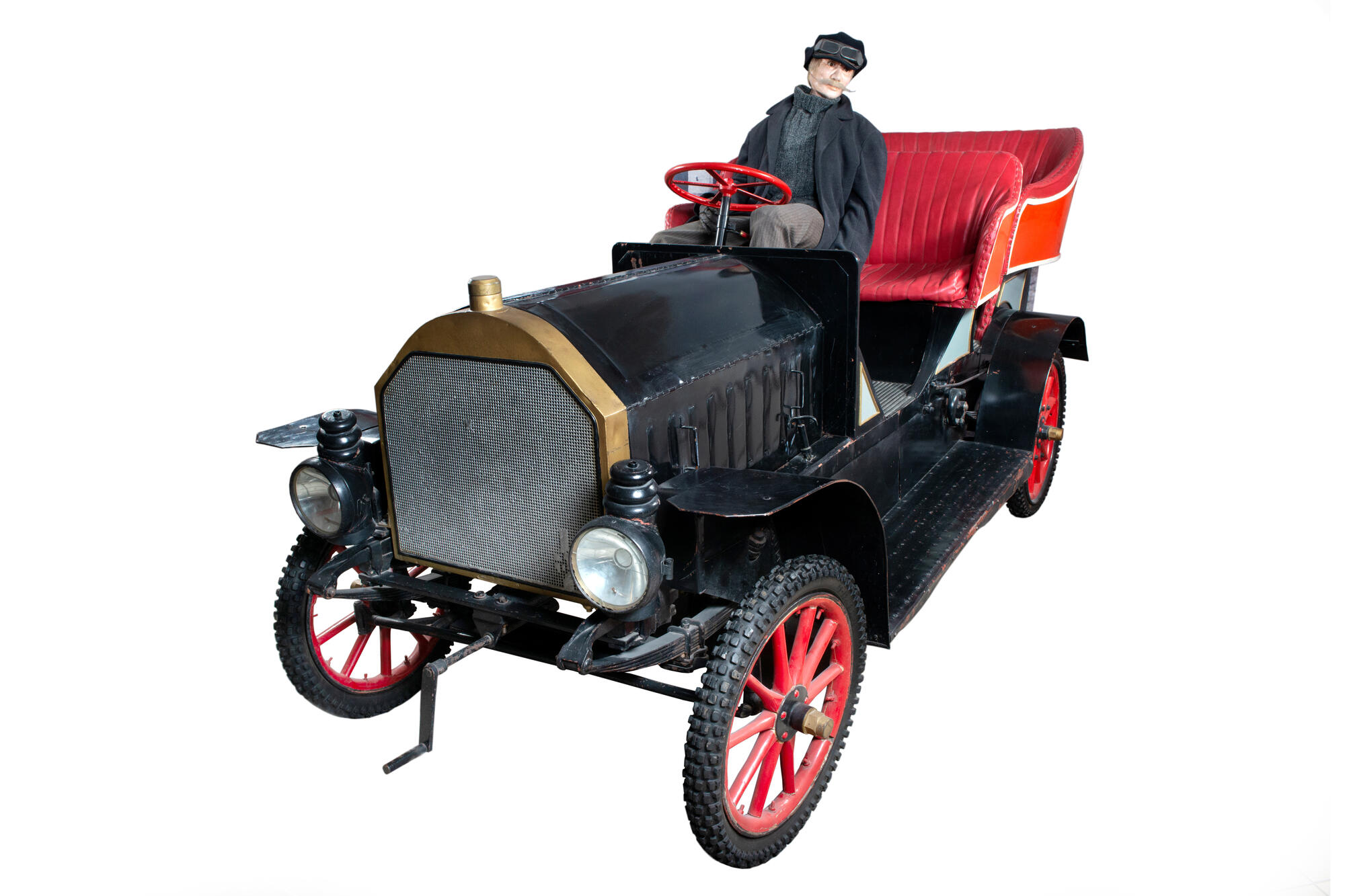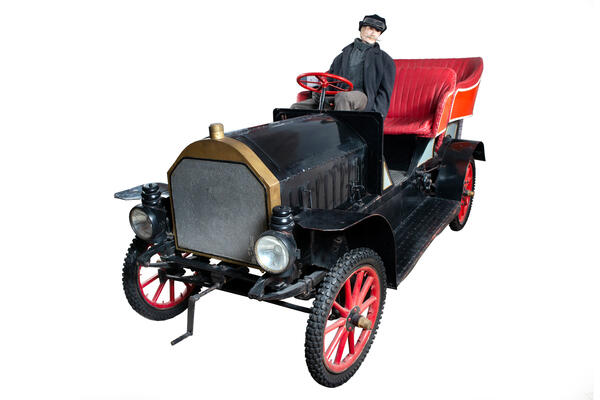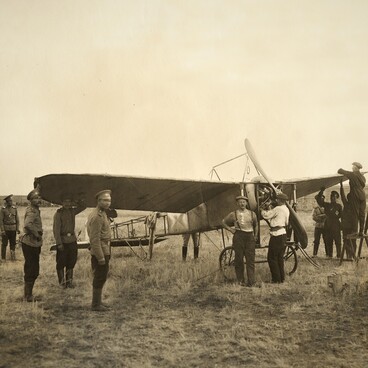The museum purchased the vintage automobile ‘Georges Richard’ from the Omsk citizen Sergei Solovyov. According to him, the car used to belong to the Omsk administration secretary, who ordered it from Lyon in the late 19th century. In 1913, the automobile was sold to an Omsk railman V. Kelchevsky, an amateur mechanic. According to the recollections of his son Sergei Soloviev, whose neighbor Kelchevsky was, he tried to start the car several times but failed. However, Kelchevsky didn’t sell the car. He took care of it and even built a garage.
In 1937, Kelchevsky was subjected to repression. His relatives continued to keep the car. In 1959, as the house was sold, Kelchevsky’s daughter asked Solovyov to take the car and preserve it as historical value.
The automobile stood in the yard of the Solovyov house for about two years. On June 16, 1961, the newspaper ‘Yuny Sibiryak’ published an article ‘The Great-Grandfather of Volga and Chaika’ with a picture of the car. In August, the museum workers inspected the car. All men from the street pushed the heavy automobile to the nearest paved road. Then they put it on a high-sided truck bed with its front wheels and delivered it to the museum.
During restoration, which was in 1978一1980, the workers replaced the broken parts: the seats, running boards, dashboard, fenders, steering wheel, wheel guards, cowls, left front wheel, wheel covers, levers, and some other small parts. They restored the engine, flashlights, and hood. All metal elements were covered with anti-corrosion coating: enamel, paint, and varnish. After restoration, the car was displayed at the museum hall, and in 1990 it was brought to the historical exhibition hall.
The designer of the car, Georges Richard, was a racing driver and a French automobile industry pioneer. The first cars he designed at the end of the 1890-s copied the German Benz. He made his first original model with chain-driven leading wheels in 1901. In 1902, Richard teamed up with a designer Henri Brasier and started to produce more powerful cars under the trademark ‘Richard-Brasier’, among which the expensive racing cars were in particular demand. They were created on the basis of conventional cars but equipped with a 10-liter engine. The cars ‘Richard-Brasier’ won Gordon Bennett Cup in 1904 and 1905, making their creator famous throughout the world.
In 1937, Kelchevsky was subjected to repression. His relatives continued to keep the car. In 1959, as the house was sold, Kelchevsky’s daughter asked Solovyov to take the car and preserve it as historical value.
The automobile stood in the yard of the Solovyov house for about two years. On June 16, 1961, the newspaper ‘Yuny Sibiryak’ published an article ‘The Great-Grandfather of Volga and Chaika’ with a picture of the car. In August, the museum workers inspected the car. All men from the street pushed the heavy automobile to the nearest paved road. Then they put it on a high-sided truck bed with its front wheels and delivered it to the museum.
During restoration, which was in 1978一1980, the workers replaced the broken parts: the seats, running boards, dashboard, fenders, steering wheel, wheel guards, cowls, left front wheel, wheel covers, levers, and some other small parts. They restored the engine, flashlights, and hood. All metal elements were covered with anti-corrosion coating: enamel, paint, and varnish. After restoration, the car was displayed at the museum hall, and in 1990 it was brought to the historical exhibition hall.
The designer of the car, Georges Richard, was a racing driver and a French automobile industry pioneer. The first cars he designed at the end of the 1890-s copied the German Benz. He made his first original model with chain-driven leading wheels in 1901. In 1902, Richard teamed up with a designer Henri Brasier and started to produce more powerful cars under the trademark ‘Richard-Brasier’, among which the expensive racing cars were in particular demand. They were created on the basis of conventional cars but equipped with a 10-liter engine. The cars ‘Richard-Brasier’ won Gordon Bennett Cup in 1904 and 1905, making their creator famous throughout the world.



